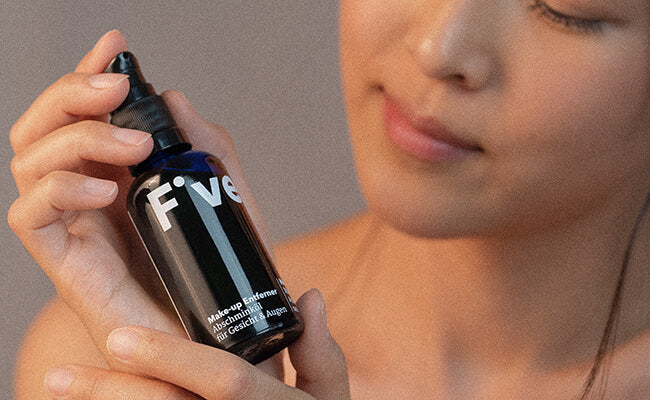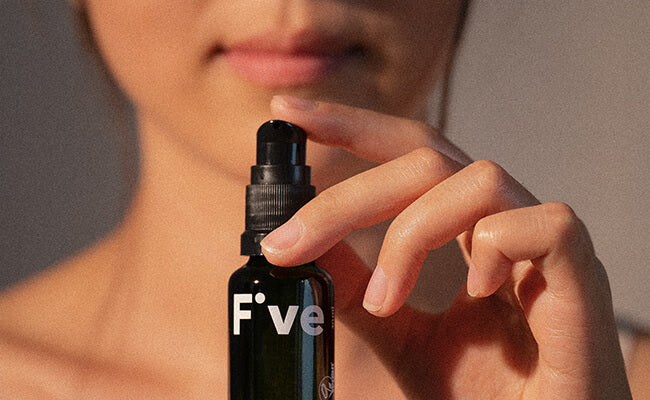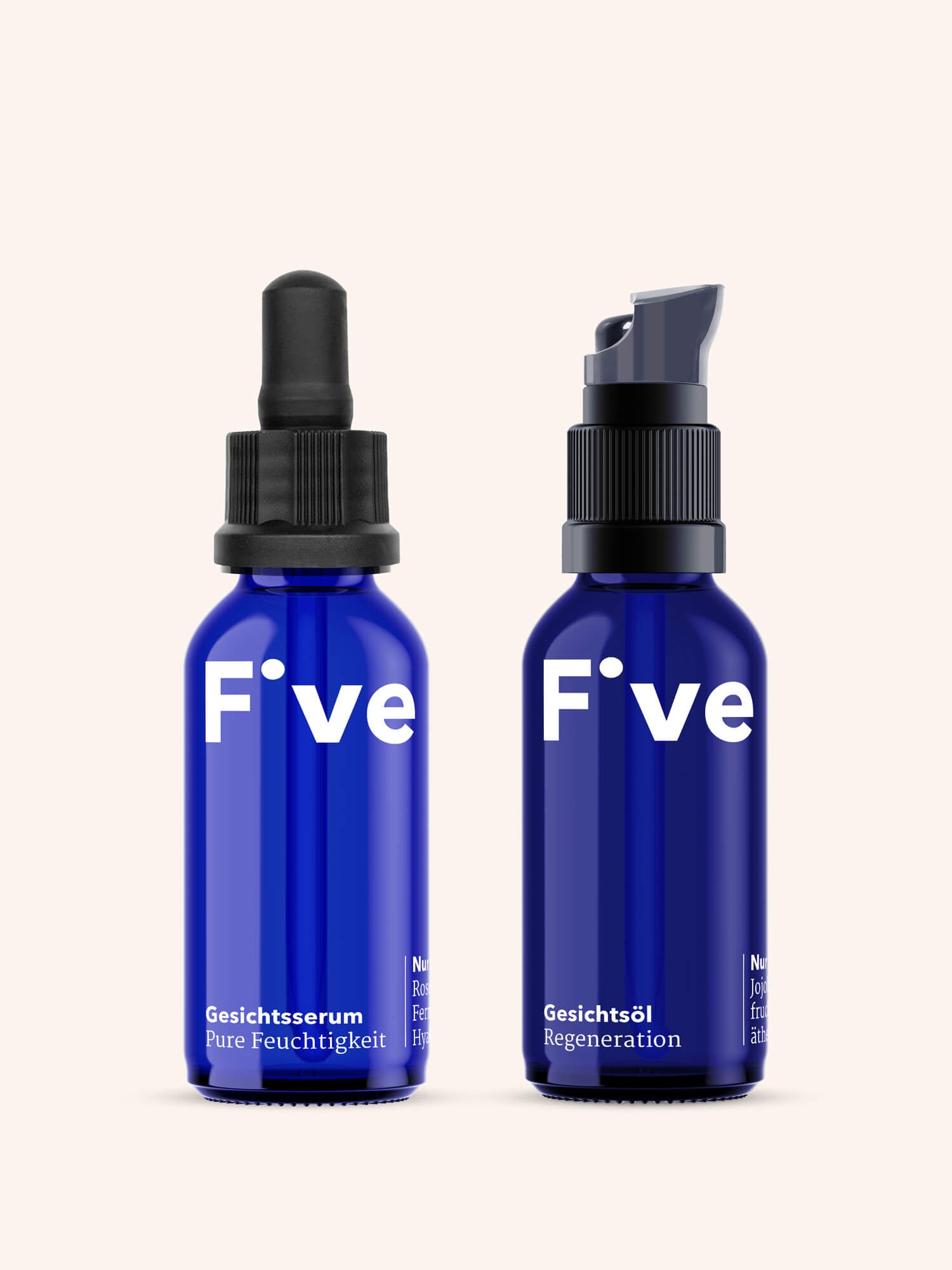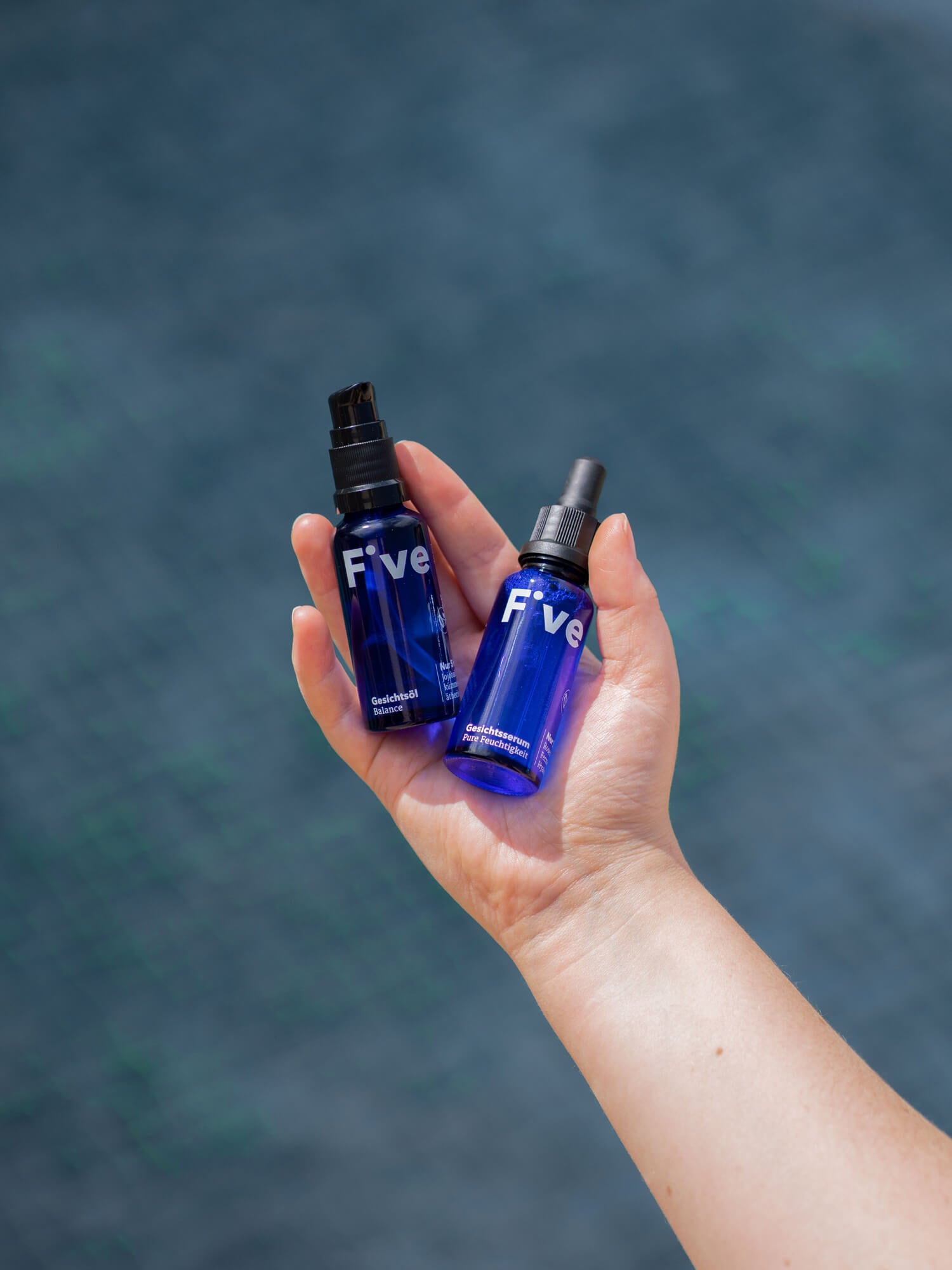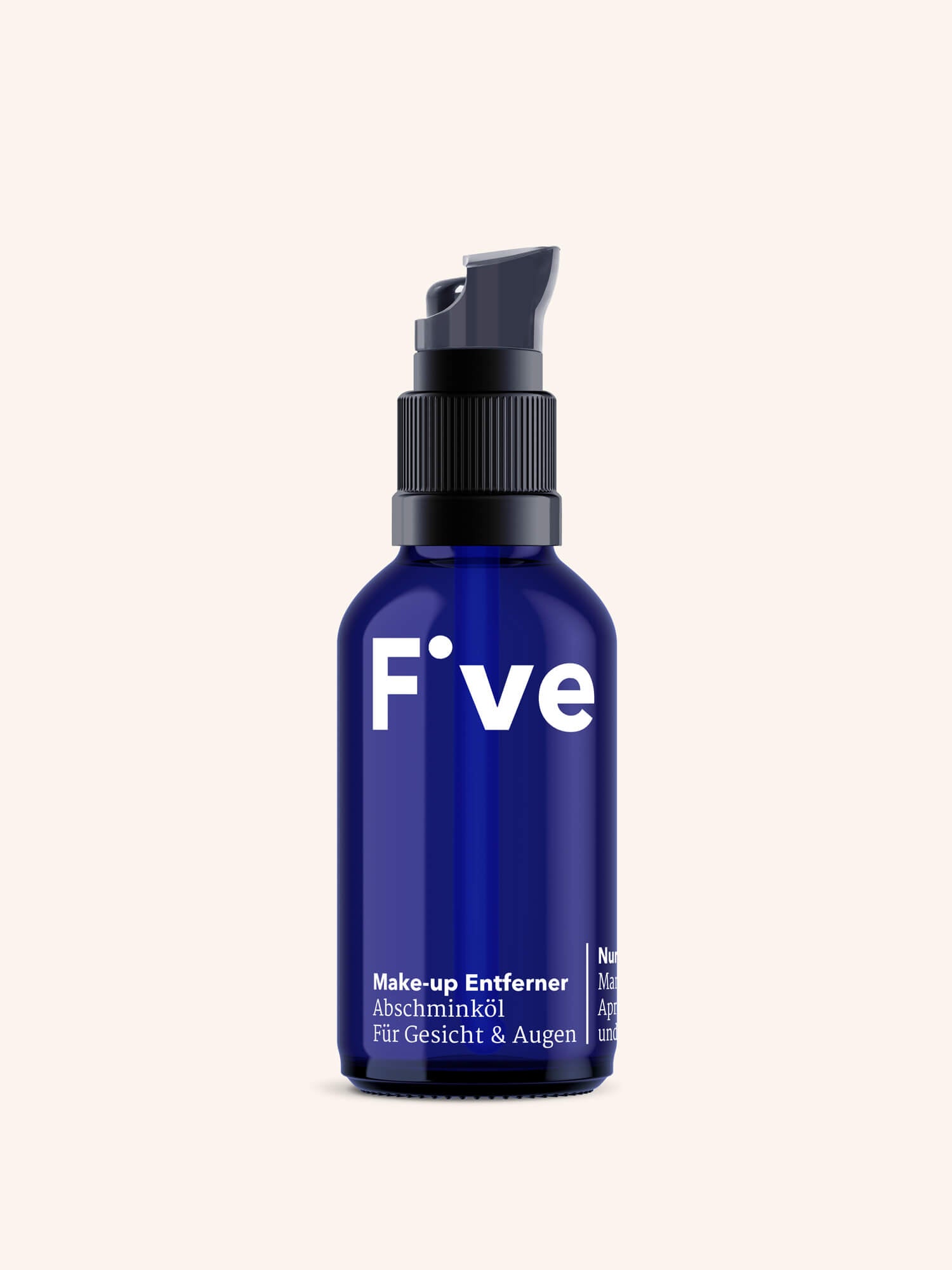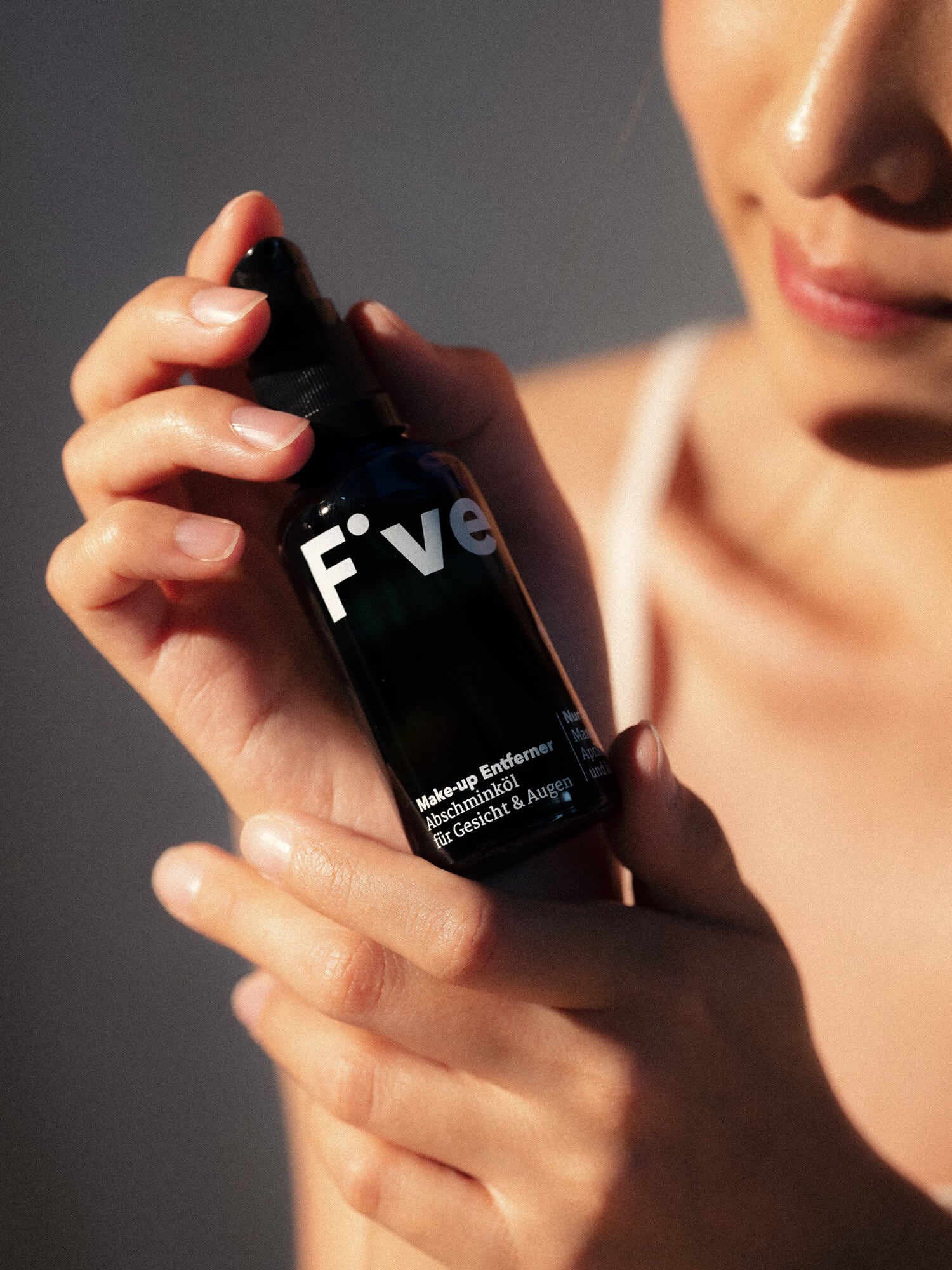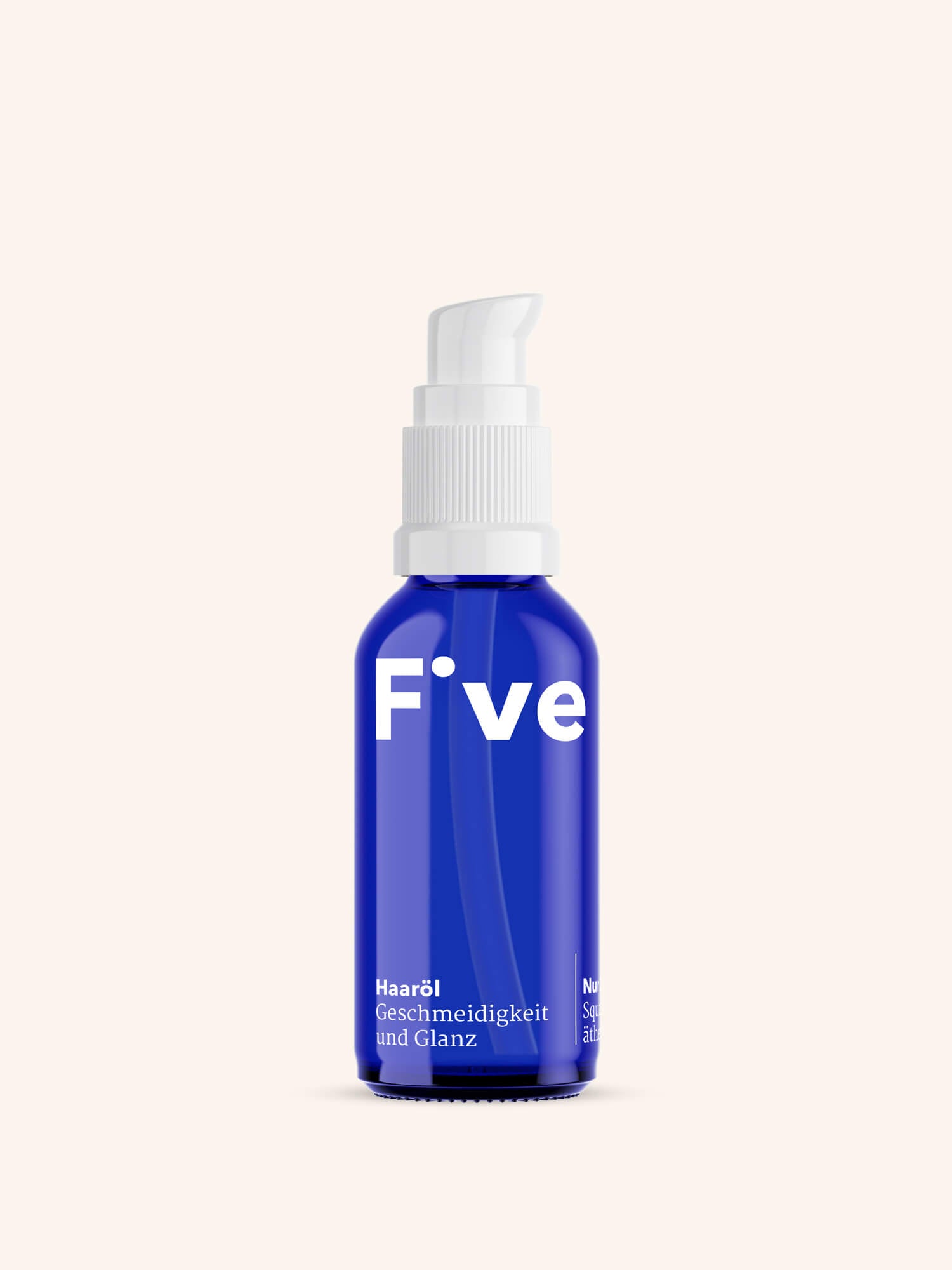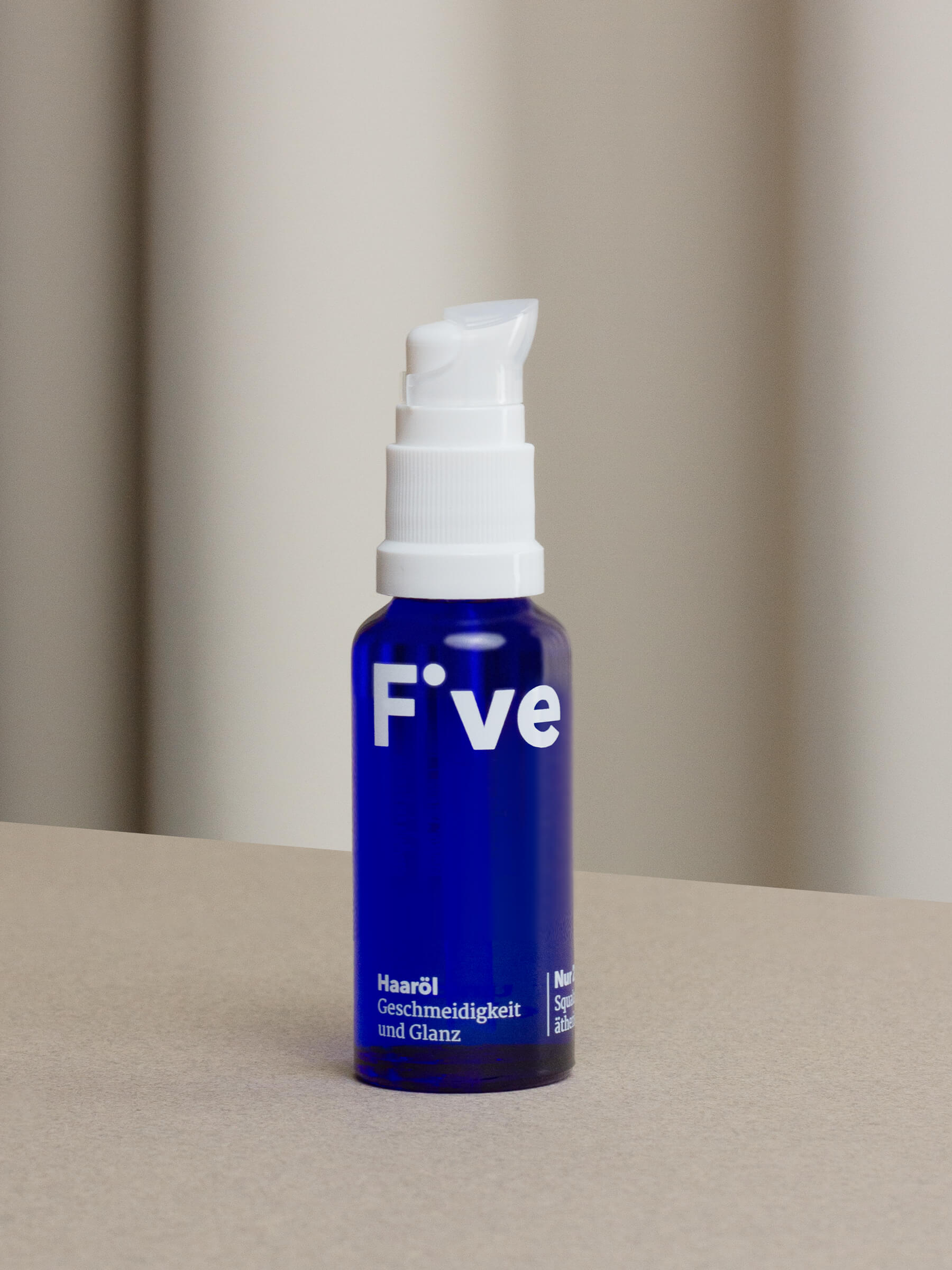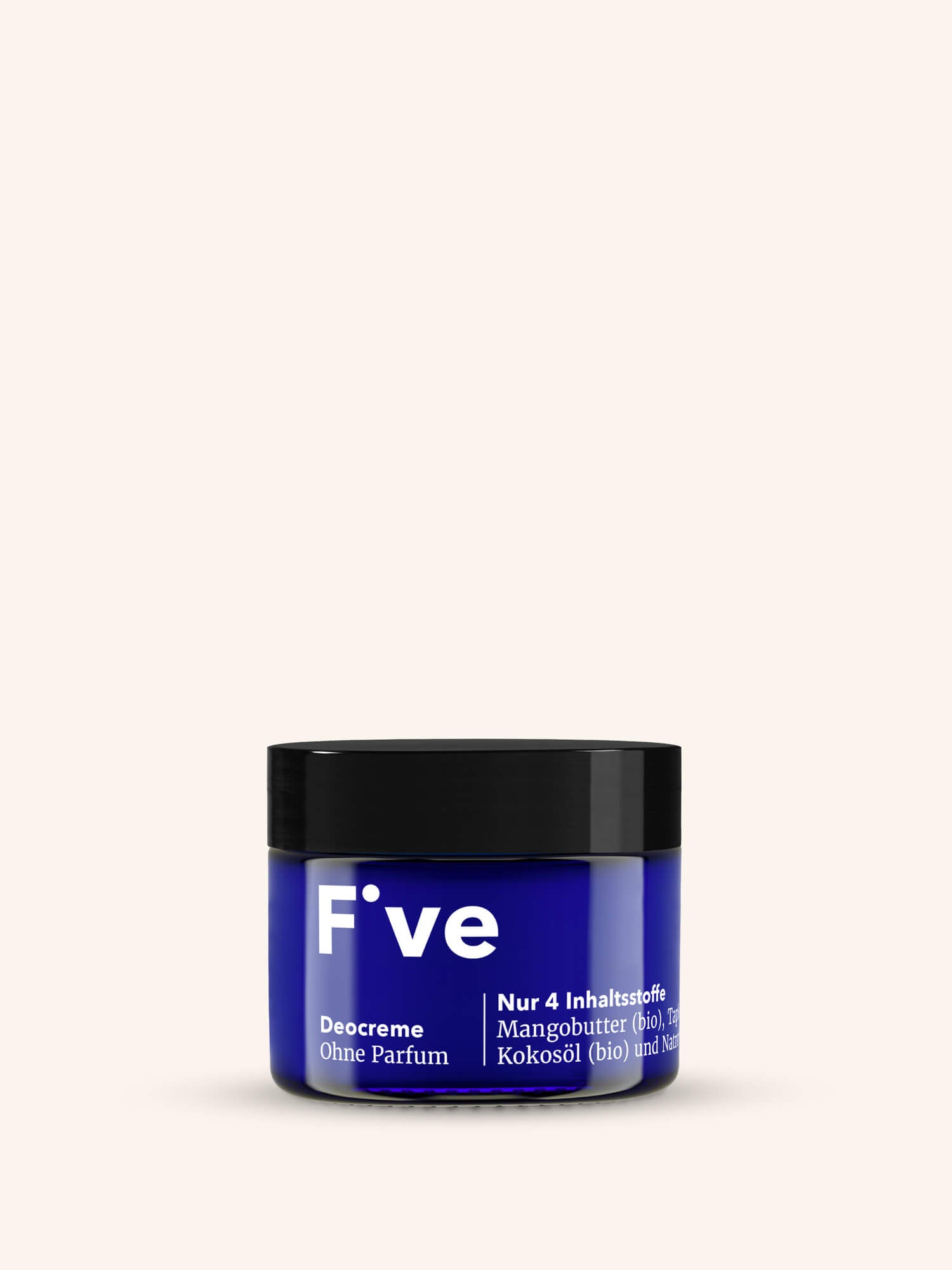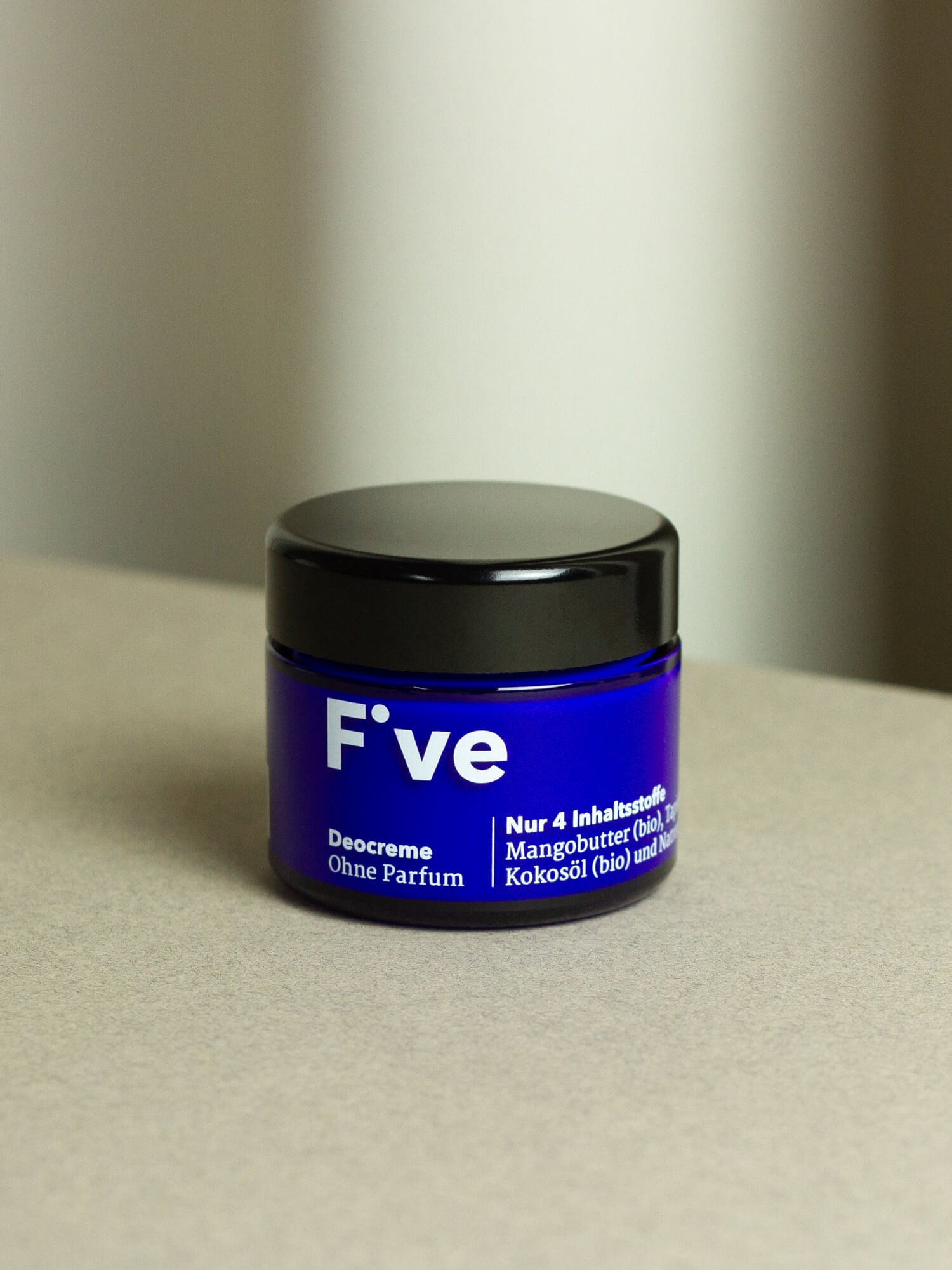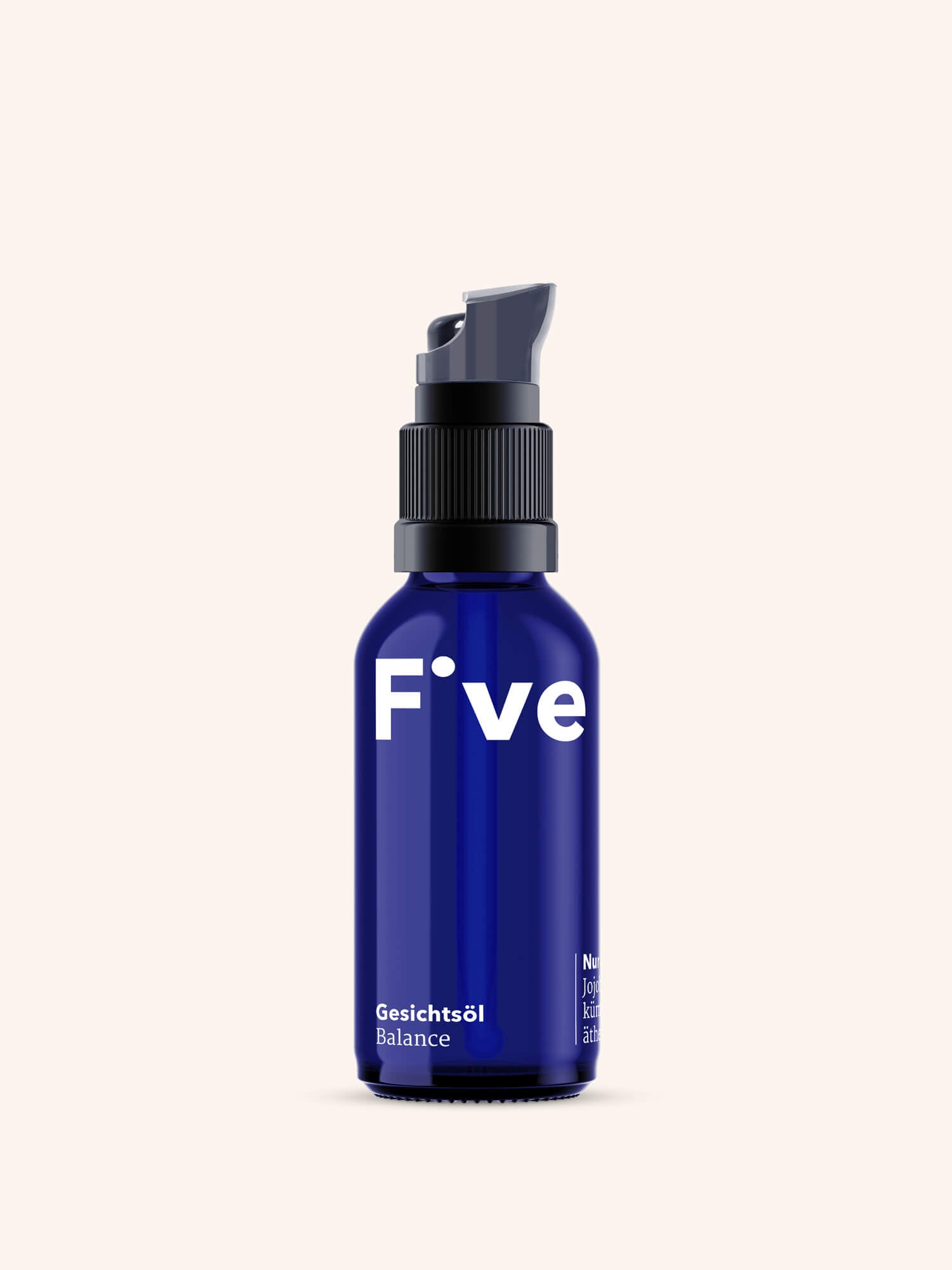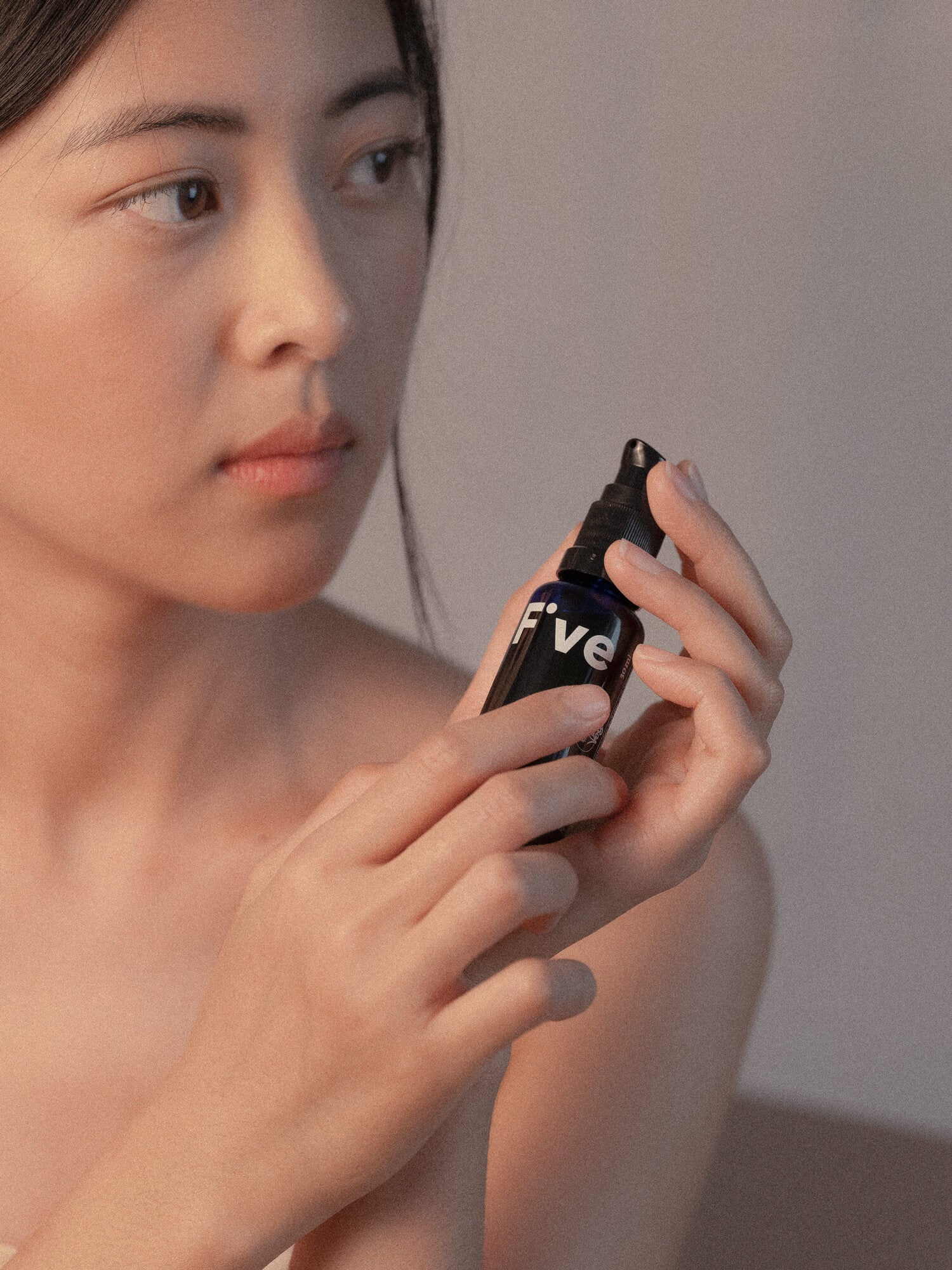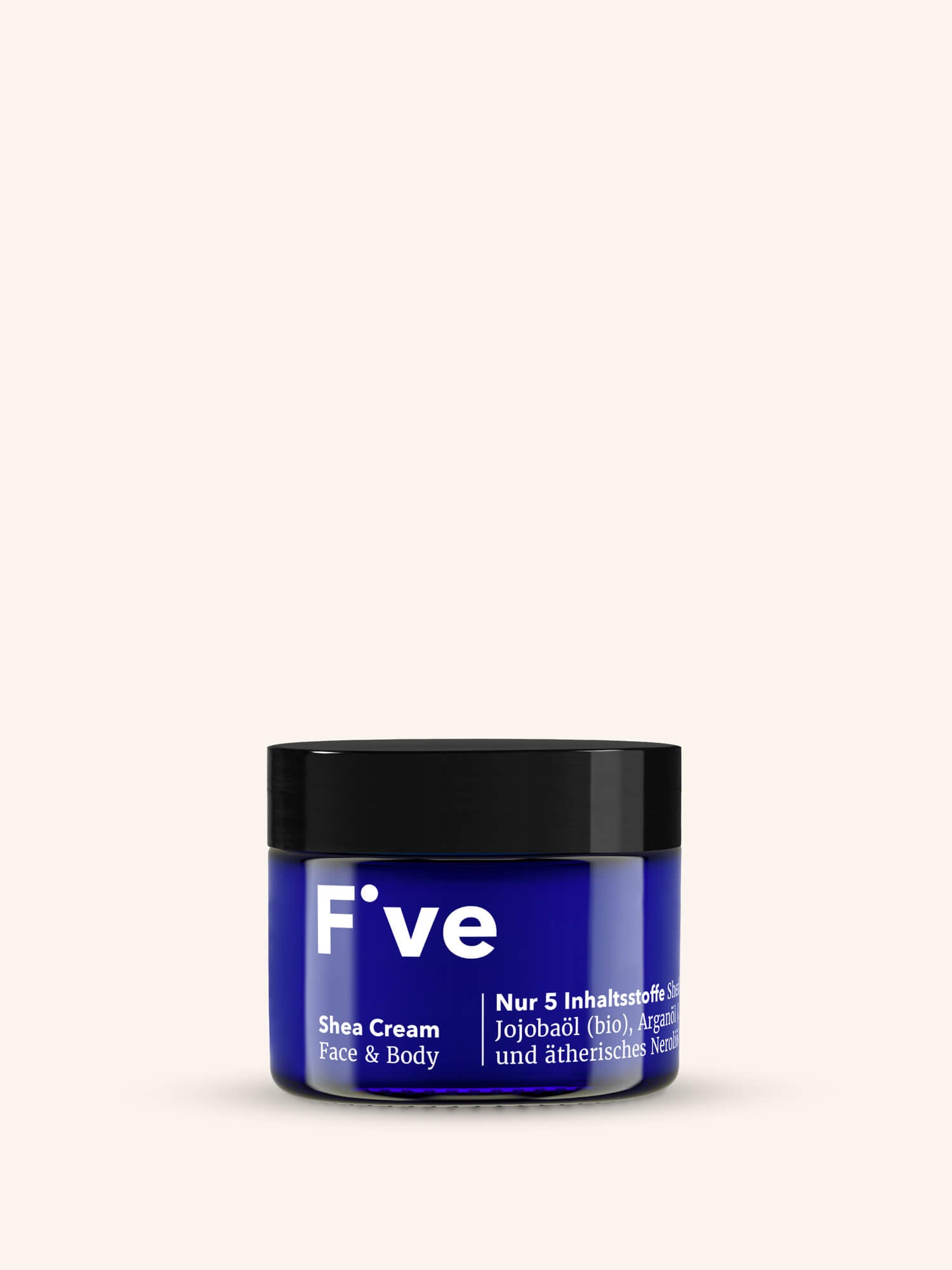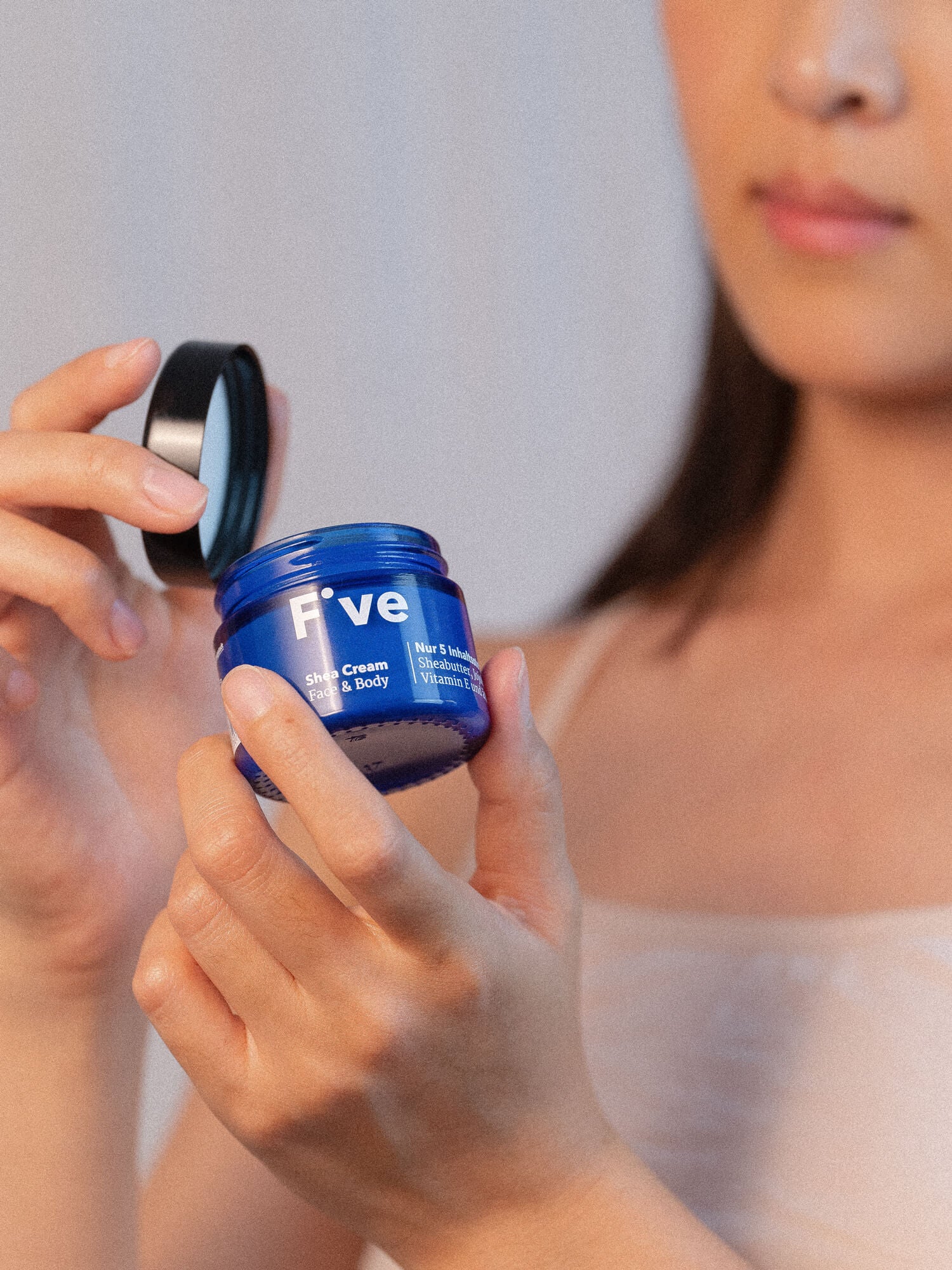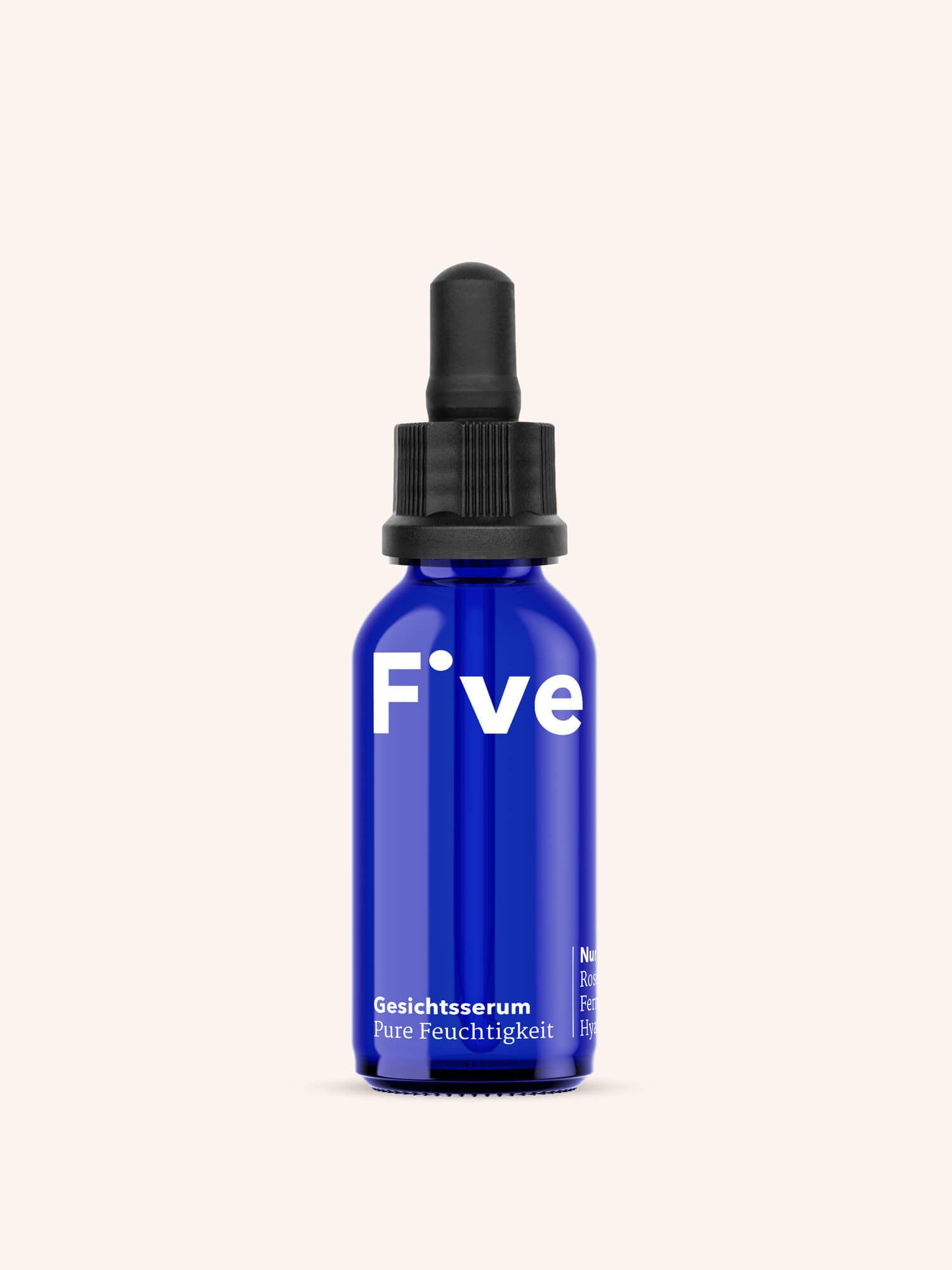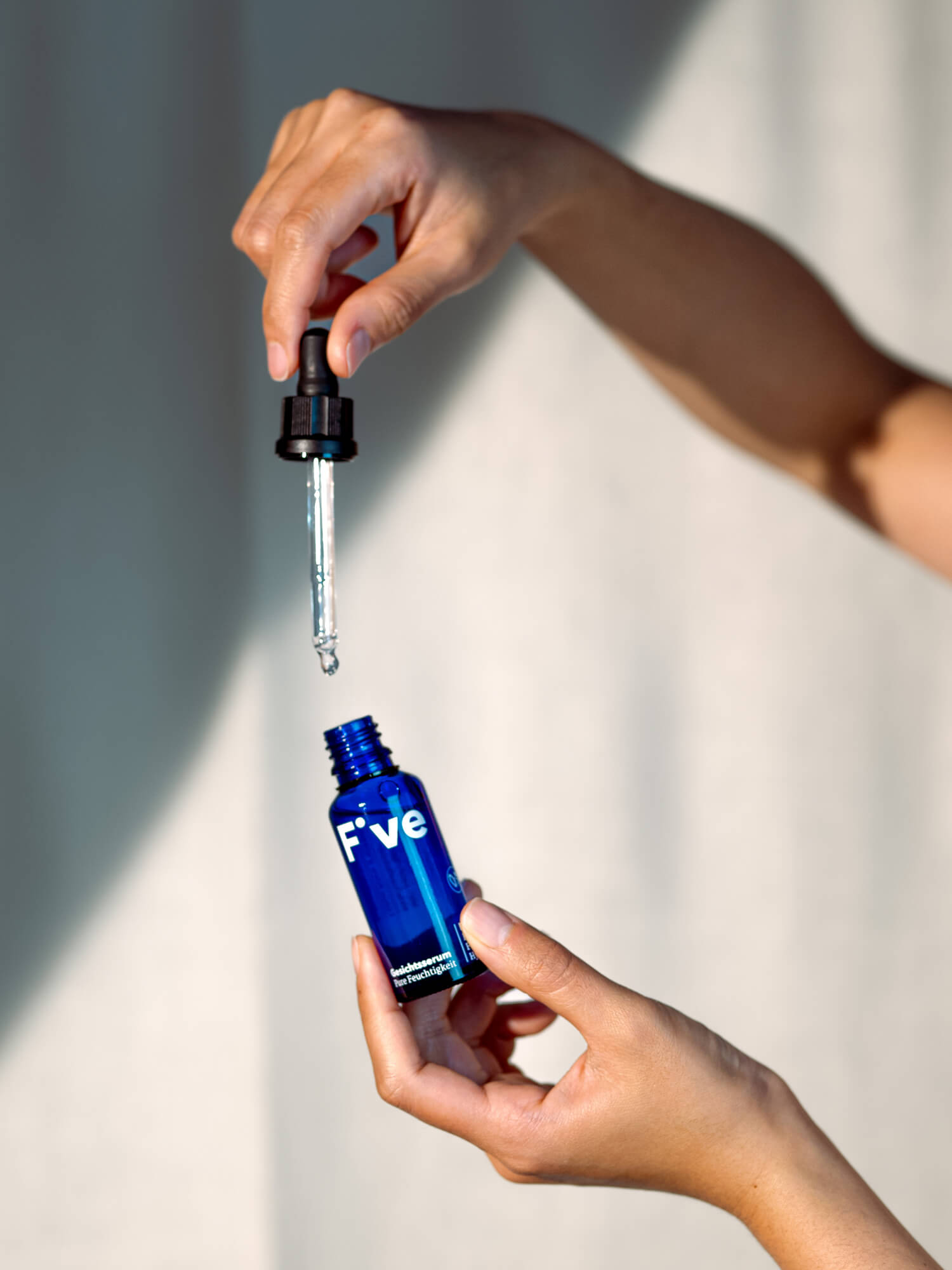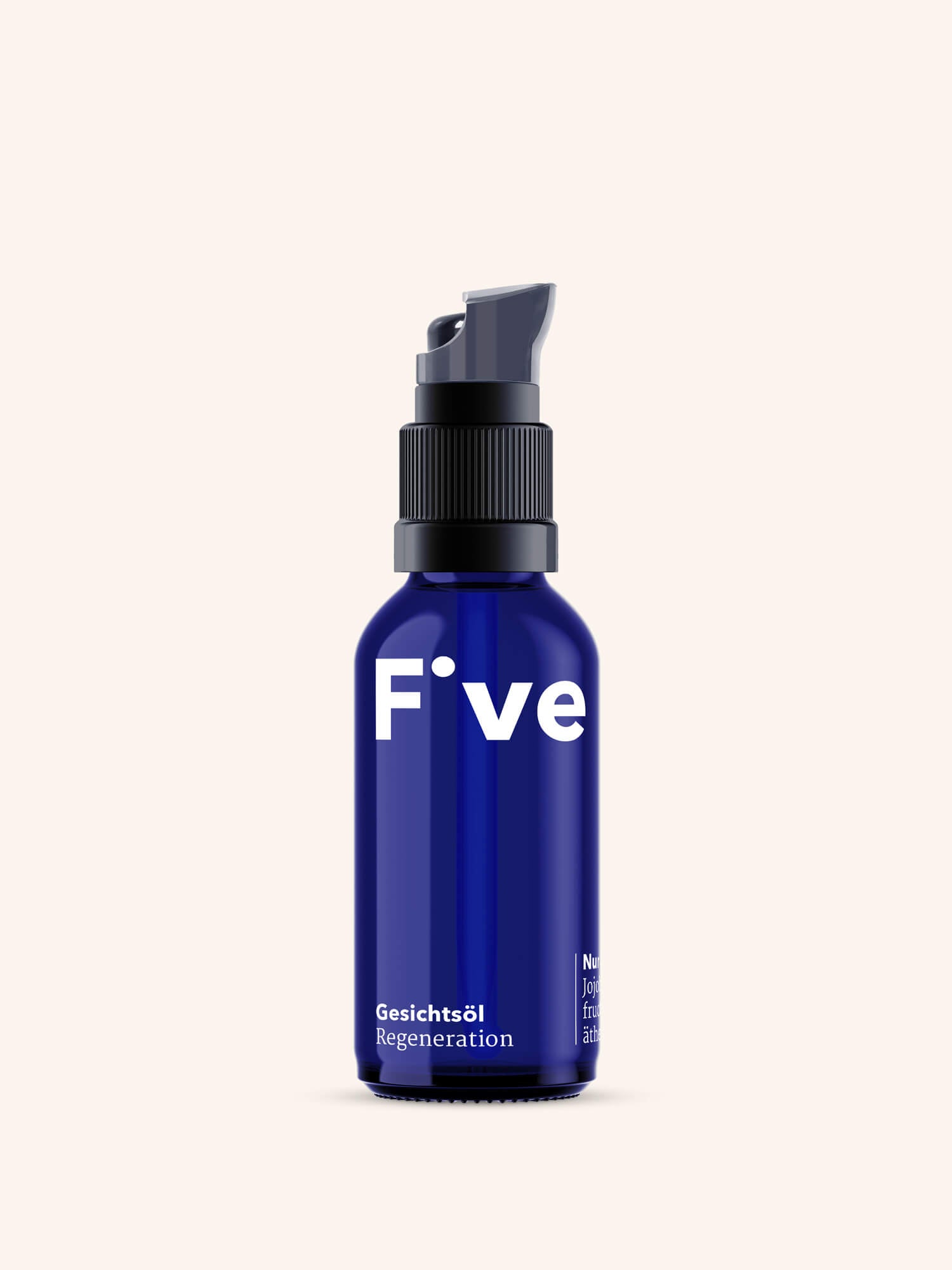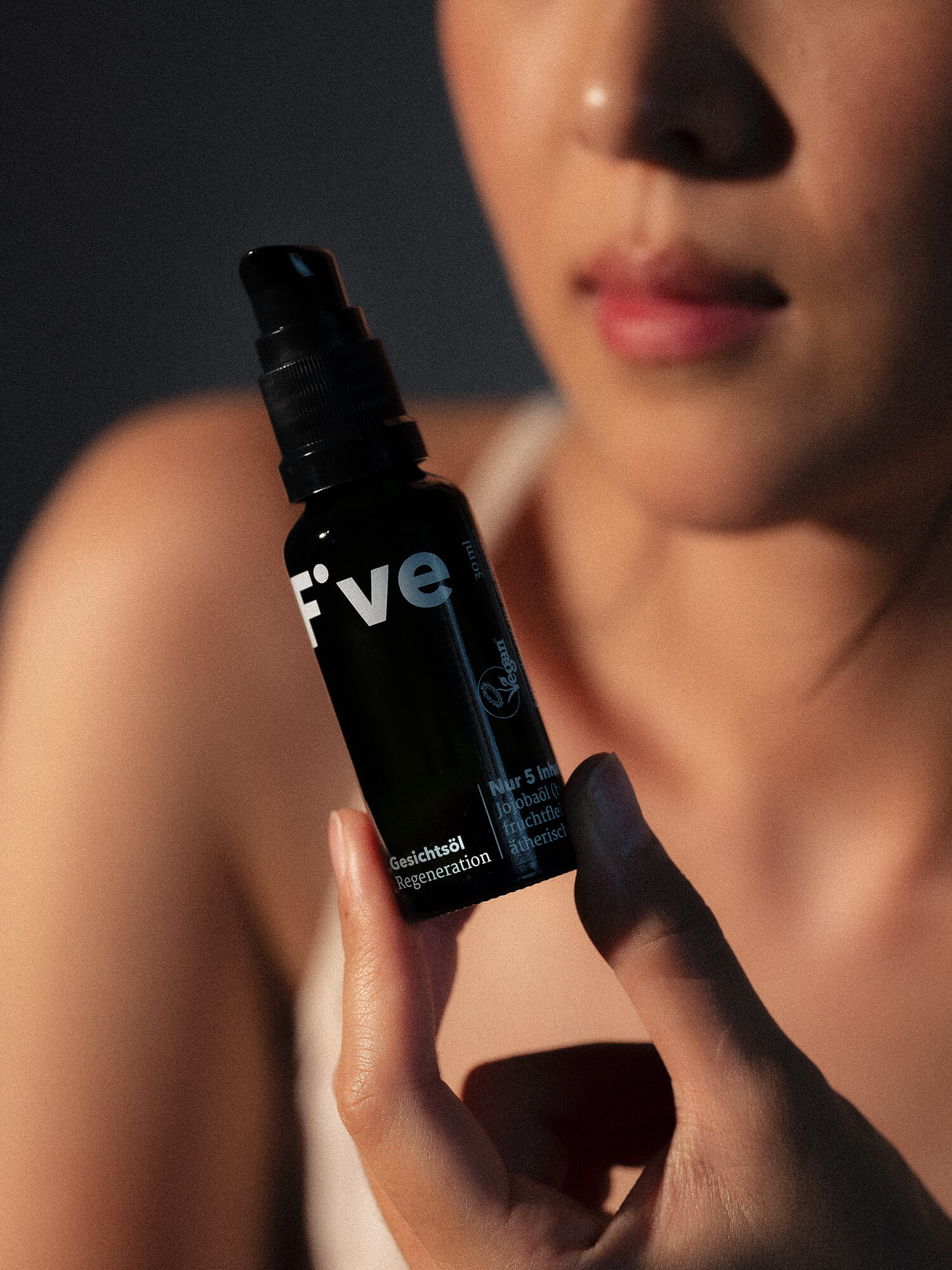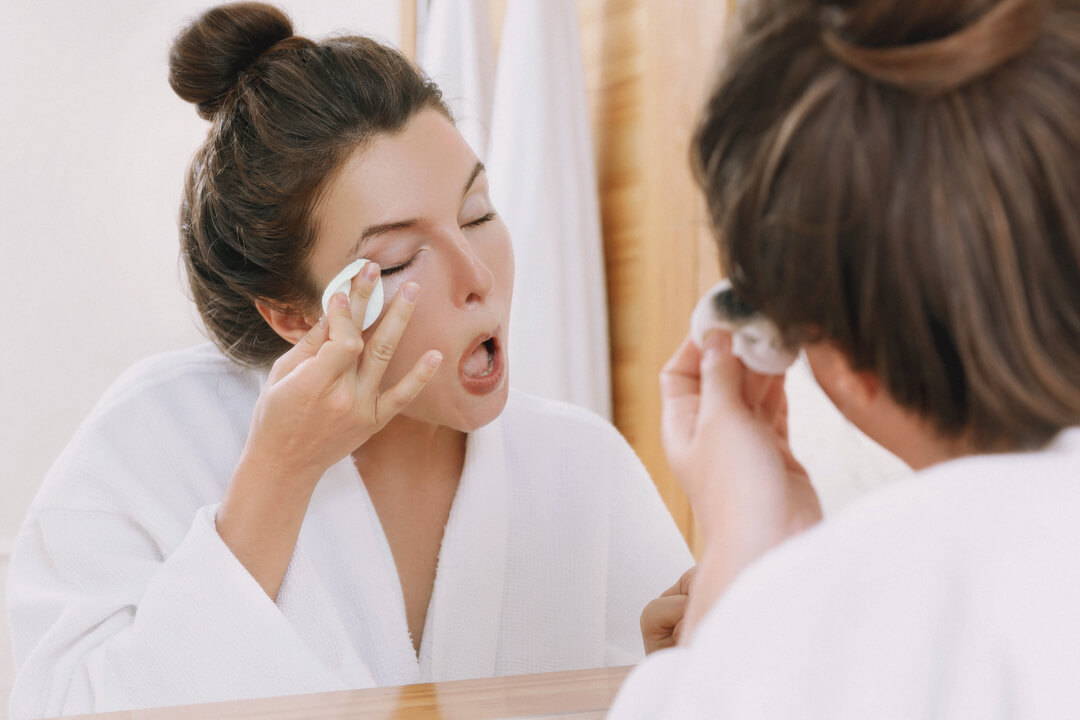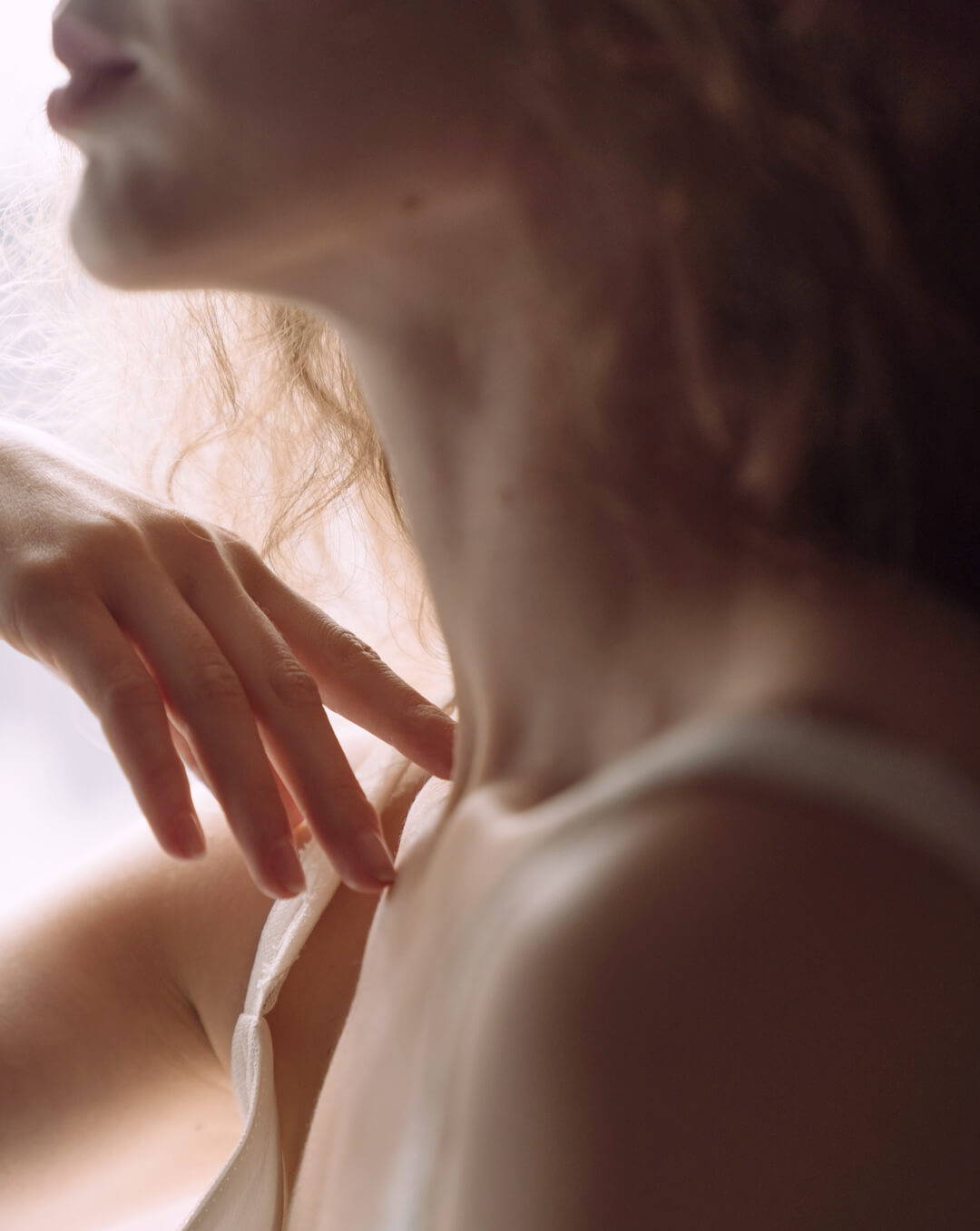Rosacea erkennen und vorbeugen
Rosacea in den Griff bekommen? Für viele, die unter den schmerzenden und schwellenden Rötungen leiden, ist das ein Traum. Die Hautkrankheit sucht sie meist schubweise heim. Dabei durchläuft sie mehrere Stadien. Und darin liegt deine Chance, Rosacea zu mildern. Wie du neue Schübe erkennst und was du dagegen tun kannst, erfährst du hier.

Was ist Rosacea?
Gerötete Haut, Knötchen, Hitzestaus oder auch stechende Schmerzen gehören zu den Symptomen der Rosacea (manchmal auch Rosazea geschrieben). Es handelt sich dabei um eine entzündliche Hautkrankheit, die das Bindegewebe betrifft. Sie beschränkt sich meist auf das Gesicht. An Hals und Dekolleté treten die sogenannten Effloreszenzen nur selten auf.
Wie unterscheidet sich Rosacea von Couperose?
Die beiden Begriffe werden oft synonym verwendet, jedoch beschreibt die Couperose den ersten Schweregrad einer Rosacea. In diesem Stadium treten die Rötungen schubweise auf und klingen meist wieder ab, während sie bei der Rosacea-Erkrankung dauerhaft bestehen.
Rosacea betrifft vor allem helle Hauttypen
Am häufigsten tritt sie beim Hauttyp 1 auf, also bei sehr heller Haut und blonden oder roten Haaren. Deshalb war sie früher als „Fluch der Kelten bekannt“. Und so ähnlich schlägt sie auch zu. Viele Männer und Frauen trifft diese Dermatose in den 30ern ganz unerwartet. Vor allem beim ersten Ausbruch von Rosacea ist es deshalb schwer, rechtzeitig gegenzusteuern. Dabei verläuft die Krankheit in mehreren Phasen, die du früh erkennen kannst. Dazu musst du natürlich wissen, worauf du achten solltest.
Rosacea verläuft schubweise
Das ist zunächst einmal eine gute Nachricht. Wenn du die roten Hautblüten einmal an dir entdeckst, heißt das nicht, dass sie dich jetzt permanent begleiten. Es wird besser werden! Tricky ist allerdings, dass diese Dermatose anderen Hautproblemen ähnelt. So wird sie oft zu spät behandelt oder auch völlig falsch. Du wirst gleich sehen, warum …
Das Vorstadium der Rosacea
Deine Haut rötet sich plötzlich ohne besonderen Grund? Diese Rötungen treten in der Anfangsphase vor allem an Wangen, Nase, Kinn und in der Mitte der Stirn auf. Oft gehören scharfes Essen, heiße Getränke, Alkohol oder Stress zu den Auslösern.
Rosacea Schweregrad 1 (Couperose)
Während die Hautrötungen im Vorstadium recht schnell wieder verschwinden, halten sie immer länger an. Das wirkt dann ein bisschen wie ein Sonnenbrand, zu dem dieser Hauttyp ja auch neigt. Nur eben, dass Gefäßerweiterungen hinzukommen. Unter der Haut werden kleine Äderchen sichtbar. Der Grund: Die Entzündung spielt sich im Bindegewebe ab und das verliert dadurch an Kraft. Vereinzelt juckt, spannt, brennt oder sticht es auch an der betroffenen Stelle. Die Rosacea geht mit Trockenheit einher.
☝️ Dieses Stadium wird auch als Couperose beschrieben.
Rosacea Schweregrad 2
Die Entzündung tritt jetzt deutlich in den Vordergrund. Auf der Haut bilden sich Bläschen und Knötchen. Auch Lymphödeme sind keine Seltenheit. Sie zeigen sich als Schwellungen im Gesicht, denn dort verlaufen ja zahlreiche Lymphe.
☝️ Diese Stufe wird häufig mit Akne verwechselt und falsch behandelt. Bei Akne kommt es zu Verhornungen, was Komedonen und entzündliche Pickel hervorruft, die vor allem lokal gerötet sind. Bei Rosacea hingegen liegt die Entzündung im Bindegewebe, also tiefer in der Haut. Das führt zu einer eher flächigen Rötung mit feinen Äderchen.
Rosacea Schweregrad 3
Je mehr sich die Entzündung ausbreitet, desto auffälliger werden die Schwellungen. Das Bindegewebe und die Talgdrüsen vergrößern sich. An der Nase entstehen mitunter knollige Wucherungen. Davon sind besonders häufig Männer betroffen. Und keine Panik, so schlimm trifft es die wenigsten.
Auslöser für Rosacea-Schübe
Einige Menschen neigen vermutlich eher dazu, an Rosacea zu erkranken, aber die eigentliche Ursache für Rosacea ist bis heute nicht eindeutig geklärt. Was jedoch nicht heißt, dass man nichts über die Auslöser für Schübe weiß. So gibt es einige bekannte Faktoren, die einen Rosacea-Ausbruch begünstigen. Häufig spielen mehrere davon zusammen.
Dazu gehören die üblichen Verdächtigen bei Hautkrankheiten: UV-Strahlung, Stress, die Ernährung, Körpergifte wie Alkohol, Umweltfaktoren wie der Pollenflug oder Abgase, aber auch Kosmetika und Medikamente. Ein wichtiger Schritt, die Krankheit langfristig in den Griff zu bekommen, ist deine speziellen Schub-Auslöser zu verstehen. Wissen ist Macht, darin besteht ja die Philosophie von FIVE. Und dabei hilft ein Tagebuch.
🖋 Auslöser erkennen und meiden – dein Rosacea-Tagebuch: Ob auf Papier oder in einer App, notiere, wie du dich fühlst, emotional und vom Hautbild her. Vermerke Besonderheiten, etwa einen Strandurlaub, bei dem du viel in der Sonne bist, oder die feucht-fröhliche Party letzte Nacht. Es kann auch Sinn machen, den Pollenflug zu dokumentieren.
Rosacea behandeln
-
Bitte geh zum Hautarzt
So verhinderst du, dass die Krankheit weiter fortschreitet. Das empfehle ich wirklich nicht bei jedem Hautproblem, doch Rosacea sollte unbedingt richtig diagnostiziert werden. Zudem wird die Haut oft durch Milben oder anaerobe Keime belastet, die du nur mit entsprechender Therapie los wirst.
-
Hole dir eine Zweit- oder Drittmeinung ein
Wir bekommen oft E-Mails von verzweifelten Menschen, die mit der verschrieben Therapie der Dermatolog:innen nicht glücklich sind. Viele berichten, dass ihre Rosacea nach dem Absetzen der Medikamente noch schlimmer wurde. Oft lesen wir auch heraus, es sei nicht ganz klar, ob es sich um eine Rosacea handele. Auch Dermatolog:innen fällt die Diagnose mitunter schwer, weil die Symptome oft einer Akne ähneln. Deshalb: Wenn du nicht zu 100% überzeugt bist, hol eine Zweitmeinung ein.
-
Sei aktiv und informiere dich
Keine Therapie wirkt so richtig gut, wenn du nicht mithilfst. Gerade bei Hauterkrankungen ist das super wichtig. Setze dich selbst mit deiner Krankheit auseinander – Stichwort Tagebuch. Und achte darauf, Dinge, die du als Auslöser im Verdacht hast, zu meiden. Eine antientzündliche Ernährung ist eine Hilfe, aber auch aktive Stressreduktion.
Hautpflege bei Rosacea
Bei dieser Dermatose kann die beste Hautpflege keine medizinische Behandlung ersetzen. Sie kann aber sehr wohl unterstützen und vorbeugen. Die richtige Pflege für Rosacea zu finden ist nicht leicht, denn jede Haut reagiert etwas anders. Nur du selbst kannst herausfinden, wie du auf bestimmte Inhaltsstoffe reagierst. Beschwerden wie Brennen oder Jucken sind ein Hinweis darauf, dass du das Produkt meiden solltest.
Worauf du bei Rosacea achten solltest
- Bei Entzündungen solltest du alles meiden, was reizt. Das schließt Gesichtswasser mit Alkohol ein, aggressive Reinigungsmittel, aber auch zahlreiche Hilfsstoffe, die wasserhaltigen Produkten zugesetzt werden müssen.💧 Besser: Wenn Reinigung dann super-sanft, zum Beispiel mit Kokos- oder Zuckertensiden, wie sie meist in Naturkosmetik vorkommen. Danach die Haut nur sachte abtupfen, nicht mit dem Handtuch rubbeln.
- Auch wenn sich die Haut trocken anfühlt, reichhaltige Cremes, vor allem klassische Produkte mit Mineralölen, sind nichts für dich. Sie wirken okklusiv, bleiben also auf der Haut. So staut sich in deiner entzündeten Haut noch mehr Hitze und verschlimmert das Problem. 🌱 Produkte mit Pflanzenölen hingegen ziehen in die Haut ein, statt sie wie eine Plastikfolie abzudecken.
-
Weniger ist mehr. Bei Rosacea heißt es, sparsam mit Produkten und sogar Wasser umzugehen. Das sollte maximal lauwarm sein, niemals heiß. Es kann sein, dass deine Haut sogar auf pures Wasser reagiert. Dann kann Destilliertes die Lösung sein, um dein Gesicht zu waschen.
- Meide alles, was die Durchblutung im Gesicht fördert. Also Finger weg von Peelings, ganz gleich ob mechanisch oder mit Fruchtsäuren. Es gibt auch Inhaltsstoffe, die die Durchblutung anregen. Meide jetzt auch Menthol, Rosmarin, Duftstoffe und Koffein.
- Go naked: Wenn es irgend geht, verzichte auf Make-up. Herkömmliche Foundations enthalten meist Mineralöle und Silikone, die wieder einen okklusiven Effekt haben. Es ist natürlich verständlich, wenn du die Rötungen gern abdecken möchtest. Falls du darauf wirklich nicht verzichten magst, greif lieber zu Produkten aus der Naturkosmetik, die auf abdichtende Silikone und Mineralöle verzichten.
- Meide sehr komplexe Produkte, also welche mit vielen Inhaltsstoffen. Oft sind es ja gut 30 Stück bei herkömmlicher Kosmetik. Da ist eigentlich immer irgendetwas dabei, das deine Haut reizt oder noch mehr austrocknet. Emulgatoren zum Beispiel. Da diese meist in Cremes vorkommen, solltest du in Erwägung ziehen dem Konzept „Creme” ganz den Rücken zu kehren. 💡 Alternativen zu Cremes sind emulgatorfreie Feuchtigkeitsseren wie das FIVE Gesichtsserum und dazu ein pflanzliches Öl.
- Trage immer einen Sonnenschutz auf. Wähle den LSF hoch genug für deinen hellen Hauttyp. Sonnencreme mit mineralischen UV-Filtern eignet sich besser als chemische Filter. Letztere wandeln das Licht in Wärme um und davon hat deine entzündete Haut gerade mehr als genug.
Sind die Produkte von FIVE für Rosacea geeignet?
Diese Frage erreicht uns nicht selten. Pauschal lässt sich das leider nicht beantworten. Bei allen verhält sich die Haut etwas anders, hat andere Auslöser. Tendenziell gut an den FIVE Produkten bei Rosacea ist, dass sie so minimalistisch sind. Sie enthalten also keine Alkohole, Mineralöle, Emulgatoren, Parabene etc., denn sie sind für sensible Haut konzipiert, allerdings nicht speziell für Rosacea.
Was normalerweise sehr gut vertragen wird, ist das FIVE Gesichtsserum. Es spendet reichlich Feuchtigkeit mit veganer Hyaluronsäure und Glycerin, die deiner geschädigten Haut ja schnell verloren geht. Und das Rosenhydrolat beruhigt. Einige Kundinnen vertragen auch die FIVE Gesichtsöle bestens, andere weniger, weil sie ätherische Öle enthalten.
Meine Empfehlung:
Fang mit dem FIVE Gesichtsserum an. Wenn das super für dich passt, könntest du es zusätzlich mit einem der FIVE Gesichtsöle probieren und die sehr sparsam dosieren. Oder du kombinierst das Gesichtsserum mit einem unparfumierten pflanzlichen Öl, das die Hautbarriere stärkt. Da kann ich das Ceramid-Öl von Pai Skincare empfehlen. Das kannst du als Pflege und zum Abschminken verwenden. Einfach etwas davon in das trockene Gesicht einmassieren und mit einem lauwarmen Baumwolltuch sanft abnehmen – nicht vergessen: Kein Rubbeln. Mit diesen beiden Produkten in Kombination mit einer Sonnencreme, zum Beispiel auch von Pai gibst du deiner Haut alles an Pflege, was sie benötigt.
Fazit: Rosacea gehört behandelt
Dieser Punkt ist sehr wichtig. Gute, reizarme Pflege hilft, kann aber allein keine Wunder wirken. Also finde die Dermatologiepraxis deines Vertrauens und arbeite aktiv mit, zum Beispiel indem du ein Tagebuch führst. So lernst du deine Trigger kennen und kannst sie vermeiden. Versuche auch deine Ernährung auf antientzündlich umzustellen, denn vieles, was wir zu uns nehmen, fördert Inflammationen. Und reduziere deinen Stress. So hast du gute Chancen, deine Hautzustände in den Griff zu bekommen.
Viel Erfolg!
Deine Anna

